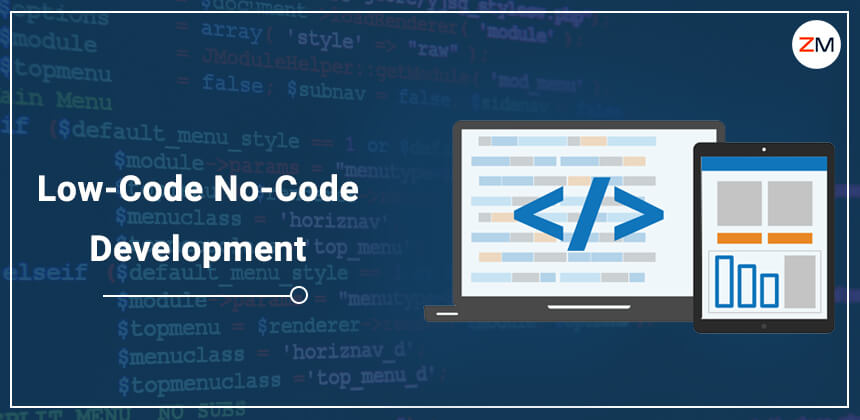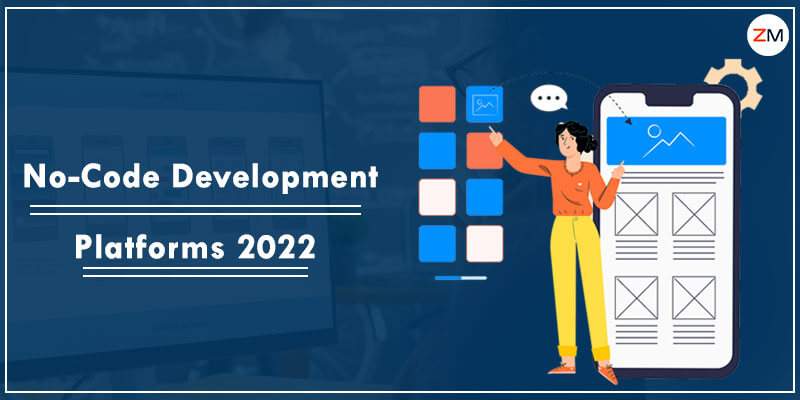Top 7 Low-Code App Development Platforms for Scalable Enterprise Solutions (with Real-World Use Cases)
Looking to launch scalable enterprise apps, without the chaos of traditional dev cycles? This guide breaks down the top 7 low-code platforms that global tech teams trust in 2025, complete with real-world use cases and practical insights.

Why Low-Code Is Changing the Enterprise App Game
Let's face it: traditional app development can feel like assembling IKEA furniture, without instructions. You invest months, burn through budgets, and still miss deadlines.
Low-code platforms flip the script.
By 2025, over 70% of new enterprise apps will be built using low-code or no-code platforms. Source: Statista
These platforms let developers and business users alike build and launch applications visually, using drag-and-drop interfaces and pre-built components. The result? Faster time to value. Lower cost. Fewer headaches.
Modern teams are switching to low-code development services to speed up delivery and reduce complexity without compromising on enterprise-grade features.
Why Enterprises Are Going Low-Code
- 3x Faster Delivery: Launch enterprise apps in weeks, not quarters.
- 50–70% Cost Savings: Cut dev costs and reduce resource dependencies.
- Legacy System Integration: Seamlessly connect with ERPs, CRMs, and databases.
- Cross-Team Collaboration: Empower devs, product, and ops to build together.
For more context, check out our in-depth guide to low-code platforms where we explain architectures, pros/cons, and scaling strategies in detail.
How to Choose the Right Low-Code Platform
Choosing a platform is like picking a vehicle. A Ferrari and a delivery truck both drive, but serve wildly different needs.
5 Key Factors to Consider
- Scalability: Can it grow with your business?
- Integration Power: APIs, ERPs, CRMs, databases, does it play nice?
- Security & Governance: Enterprise-grade compliance (GDPR, HIPAA)?
- User Friendliness: Will your product and ops teams actually use it?
- Ecosystem: Good support, community, and training resources?
Pro Tip: Always start with a POC. Build a micro-version of your use case to test platform fit.
Top 7 Low-Code Platforms to Watch in 2025
1. Mendix
Best For: Large-scale, highly scalable enterprise apps
- Visual + full-stack development
- Cloud-native deployment
- Advanced workflow engine
- One-click multi-cloud deployment
Real Use Case: A global logistics giant streamlined warehouse ops across 12 countries with Mendix and Oracle ERP. Zestminds handled the backend. Manual data entry dropped by 85%.
2. OutSystems
Best For: Legacy system modernization and enterprise-grade UI/UX
- Full-stack with custom code flexibility
- SAP, Salesforce, Dynamics connectors
- Scalable, secure apps with DevOps built-in
Real Use Case: A fintech firm migrated from Excel-based workflows to a dynamic dashboard on OutSystems. We got it live in 8 weeks, improving customer onboarding speed by 40%.
3. Microsoft Power Apps
Best For: Internal business tools within Microsoft ecosystem
- Tight integration with Excel, SharePoint, Teams
- Built-in AI Builder
- Pre-built templates for rapid app prototyping
4. Appian
Best For: Workflow automation and compliance-heavy apps
- Unified data fabric
- Strong process modeling tools
- High-security deployments
Real Use Case: A GDPR-compliant HRTech firm automated case workflows in Appian. With full audit trails and escalations, rollout was done in 30 days.
5. Bubble
Best For: Startups and MVPs
- Complete visual frontend and backend builder
- Marketplace of plugins (Stripe, Algolia, OpenAI)
- Affordable for lean teams
While no-code development tools like Bubble are great for MVPs, scaling securely requires considering dev architecture and handoffs early.
6. Zoho Creator
Best For: SMEs building internal dashboards or workflow apps
- Drag-and-drop logic builder
- Simple reporting and analytics
- Affordable pricing tiers
Real Use Case: A regional supply chain firm built a vendor performance tracker with Zoho Creator. Zestminds added real-time alert systems and automated monthly reports.
7. Salesforce Lightning
Best For: CRM-heavy apps inside Salesforce ecosystem
- Seamless Salesforce CRM integration
- Lightning Components
- Enterprise-level reporting and dashboards
Explore how we used low-code tools in this logo design automation case study to help a design platform scale with minimal backend.
Compare: OutSystems vs Salesforce Lightning on G2
Quick Pros & Cons Comparison Table
| Platform | Best Use Case | Pros | Cons |
|---|---|---|---|
| Mendix | Enterprise-scale apps | Scalable, secure, strong ecosystem | Higher learning curve |
| OutSystems | Legacy modernization | Powerful integrations, DevOps tools | Higher pricing tier |
| Microsoft Power Apps | Internal business tools | Easy to use, Microsoft-native | Limited for external UX |
| Appian | Compliance workflows | Secure and audit-ready | Expensive for small teams |
| Bubble | MVPs & startups | Fast to prototype, no-code friendly | Not ideal for large-scale use |
| Zoho Creator | SME internal tools | Affordable, quick setup | Limited extensibility |
| Salesforce Lightning | CRM-centric workflows | Native CRM integration | Requires Salesforce ecosystem |
Platforms like Bubble are great for startups building MVPs quickly. But for complex integrations or AI features, it’s best to consult MVP development experts who can guide you on when to switch from no-code to full-stack.
Industry Use Cases: Low-Code in Action
- Healthcare: Patient onboarding apps, telemedicine dashboards, digital forms
- Fintech: KYC automation, loan workflows, digital wallets
- Retail: Loyalty programs, POS dashboards, inventory apps
- Manufacturing: Vendor quality checks, equipment monitoring, workflow automation
- InsurTech: Claims management, agent portals, AI-powered chatbots
InsurTech: Claims management, agent portals, AI-powered chatbots, like this AI-powered insurance app built with low-code.
When Should You Work With a Low-Code Agency?
Low-code makes it faster, but it doesn't make it foolproof.
You should bring in an expert agency when:
- You're integrating with ERPs, legacy software, or AI engines
- Compliance matters: HIPAA, GDPR, SOC2
- Scalability, performance, or cross-team workflows matter
- You're not sure which platform fits your goals
Zestminds has implemented low-code solutions across insurance, healthcare, and logistics in the US, UK, and Germany. We help teams scale faster, with the right tech foundation.
Let's Build Your App, Faster, Smarter
Ready to launch your enterprise app 3X faster with low-code?
- Book a free consultation with Zestminds
- Get expert help with platform selection, implementation and scaling
FAQs
What is the most scalable low-code platform for enterprises?
Platforms like Mendix and OutSystems lead in scalability, offering cloud-native deployments, DevOps tooling, and full-stack control.
Can low-code platforms integrate with backend systems?
Yes. Most enterprise-grade platforms like OutSystems, Mendix, and Appian come with API managers, database connectors, and integration libraries.
Are low-code apps secure enough for sensitive data?
Absolutely. Platforms like Microsoft Power Apps and Appian offer role-based access, encryption, audit logs, and compliance-ready architectures.

Shivam Sharma
About the Author
With over 13 years of experience in software development, I am the Founder, Director, and CTO of Zestminds, an IT agency specializing in custom software solutions, AI innovation, and digital transformation. I lead a team of skilled engineers, helping businesses streamline processes, optimize performance, and achieve growth through scalable web and mobile applications, AI integration, and automation.
Stay Ahead with Expert Insights & Trends
Explore industry trends, expert analysis, and actionable strategies to drive success in AI, software development, and digital transformation.

